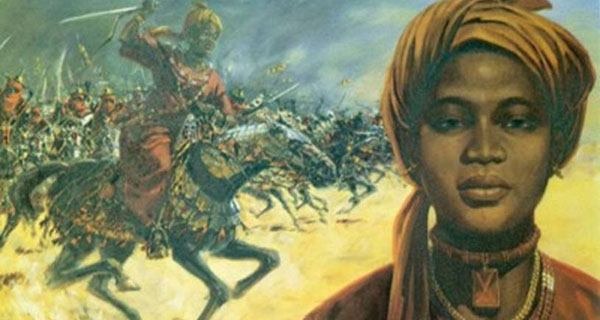Queen Anna Nzinga, previously known as Ana de Sousa Nzinga Mbande, was a brave-hearted queen of the Ndongo and Matamba Kingdoms during the (what is now known as Angola) 16th and 17th centuries AD. Queen Anna Nzinga is best remembered for emancipating her people from the chains of slavery and putting a stiff resistance against the Portuguese.
Anna Nzinga’s early life:
Queen Nzinga was born during the latter half of the 16th century, around the 1580s. Her father, Ngola Kiluanji Kia Samba, was a leader of the Ndongo people. The year marked the beginning of the resistance of the people, led by the King against the Portuguese colonialists, which was the same year that Anna Nzinga was born.
These colonial powers were said to have been raiding the territory of the Ndongo for resources, especially slaves, as they tried to fill in the labor extensive work in the New World colonies such as Brazil. The Portuguese, in their attempt of conquering areas containing silver mines, were further interested in Ndongo as they held it to be a potential silver yielding area.

According to some sources, Ngola Kiluanji was deposed by his son, Mbandi, who was also one of Nzinga’s brothers. In order to keep away potential successors to the throne, the queen’s child is also said to have been murdered by the new king. Thus to protect their lives, Nzinga and her husband fled to Matamba.
Sources further claim that Mbandi was a despotic ruler and his cruelty made him an unpopular ruler. However, many sources do not point out this claim. According to them, Nzinga remained at her brother’s court, and that the flight to Matamba with her husband was a later episode in her life.
Creation of a Peace Treaty by Nzinga:
The year 1612 was an important period in Nzinga’s life. During this year, the Portuguese invited Mbandi to a peace conference in the hopes of mediation between the two parties and ending hostilities (the king was forced to flee from his court in 1617 by the Portuguese). Nzinga was sent as the representative of the King Joao Corria de Sousa, the Portuguese governor situated in Luanda.
One of the memorable stories about Anna Nzinga took place during this meeting. It is said that, prior to this meeting, the Portuguese arranged for only one chair in the room, which meant that Nzinga would have to stand during the negotiations, thus making her seem inferior. Nzinga would not tolerate this. Thus, she made one of her male servants to kneel down, to serve as her chair.

The result of the negotiation:
The negotiations bore fruits and a peace treaty was achieved. The Portuguese reinstated Mbandi to his throne, and also agreed to limit slave raiding activities.
Nzinga took the name of Dona Ana de Sousa after converting to Christianity and being baptized. Her godparents were Joao Corria de Sousa, the Portugese governor and his wife.
However, this phase of mutual peace did not last long as the Portuguese renewed their aggression towards the Ndongo several years later.

Queen Nzinga: the courageous ruler of her people
In 1626, following her brother’s death, Nzinga ascended the throne and became the queen of her people. There are multiple speculations regarding the King’s death. While some hold that the king had committed suicide in the face of the increasingly aggressive Portuguese presence in the region, others claim that it was Nzinga who murdered her brother.
In the same year, the Portuguese renewed their attack over Ndongo and hired the Imbangala (Angolan warriors who founded the Kasanje kingdom) to fight on behalf of them. Unable to face the stiff resistance portrayed by the Portuguese militarily, Nzinga and her people fled westwards and initiated a new state at Matamba.
From Matamba, Nzinga put up a firm opposition against the Portuguese in a war that lasted three decades. The queen, among other measures, offered sanctuary to runaway slaves and Portuguese-trained African soldiers who sought protection in her kingdom. She further stirred up unrest within Ndongo as well, which was at that time under the indirect supervision of the Portuguese through a puppet king.

Nzinga also exploited European rivalries to her advantage. This was evident through the alliance that she forged with the Dutch, who were the rivals of Portugal in that region.
Her alliance worked out with the Dutch and the Portuguese were cast out of Luanda in 1641 by the combined forces of the Dutch and the Matamba. But it didn’t last long as in the following year, the Portuguese came back, and managed to reclaim Luanda. The Dutch had to evacuate Angola, and the queen had to retreat back to Matamba.
A far-sighted soul:
Nzinga wasn’t ready to accept defeat and she continued her resistance against the Portuguese. However, she was a far-sighted woman and she made efforts to transform her kingdom into a commercial power, considering that it occupied a strategic position in the world scenario.

During the time of her death, Matamba was said to have had developed into a significant commercial state that was able to deal with the Portuguese on an equal footing.
Read also: Eleanor, Countess of Desmond: The Unsung Heroine of Ireland
